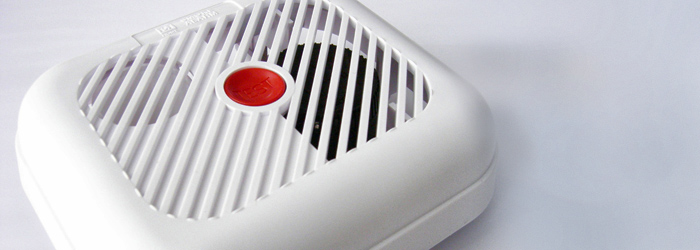New legal requirements with regards to smoke alarms and carbon monoxide alarms come into effect from October 1st 2015 but what exactly does this mean for landlords? The Landlord Link has taken a look at this new legislation to help you ensure that you are complying.
The measures were announced by Housing Minister, Brandon Lewis, back in March 2015. To summarise, landlords are expected to install smoke alarms and carbon monoxide alarms throughout their properties, bringing the law for rented properties in line with that already in place for new builds.
Predicted government figures state that they hope to prevent 26 deaths per year – as well as 670 injuries – through the new legislation.
What is Required of Landlords?
Landlords will need to install a smoke alarm on every floor of a rented property. They will also be required to install carbon monoxide alarms in any high-risk areas; any room in which there is a wood or fuel burning appliance falls into this category.
The landlord is responsible for checking that all alarms are in working order before the commencement of every tenancy and it is then the tenant’s responsibility to check these on a weekly basis for the duration of their contract.
Landlords who fail to comply with the new legislation face a civil penalty of up to £5000.
Where Should I Install the Smoke Alarms?
If you are installing one smoke alarm on each floor, this should be positioned in an area of circulation, where it can be heard from anywhere in the home. The fitting should be secured to the ceiling, no closer than 300mm to any walls or light fittings.
Whilst this is the minimum requirement, maximum safety is achieved by fitting a smoke alarm in every room of the house, barring the kitchen and bathrooms; these areas are prone to false alarms and a heat alarm is a much more reliable alternative.
Carbon monoxide alarms should be fitted at head or ‘breathing’ height, whether this is a wall-mounted alarm or a portable device.
What Type of Alarm Should I Get?
Mains powered smoke alarms are your safest option. With battery powered fittings, there is the very real possibility that your tenant will choose to remove the batteries either to prevent false alarms or simply because they need batteries elsewhere in the house, and don’t fancy a walk down to the petrol station. If you do opt for batteries, select a sealed-in battery set up to eliminate this temptation.
Another benefit of battery powered systems is that you can have all of the alarms in your property interconnected, to maximise the efficiency of the system.
Carbon monoxide alarms should create an alert both visually and audibly when the carbon monoxide levels in the air tip the scales into being at a dangerous level. These can also be linked into your mains powered smoke alarm set up.
Where Do I Get Smoke and Carbon Monoxide Alarms From?
Following the announcement of the new legislation, the Government supplied local fire and rescue services with 500,000 smoke alarms and 52,000 carbon monoxide detectors to be distributed to landlords free of charge. Get in touch with your local station – if you’re lucky, they may still have alarms left to send your way.
Failing that, The Landlord Link recommends that you invest in high quality detectors for all of your properties – the last thing you need is to be replacing them every couple of years to stay in line with your legal obligations.
Check out more advice for landlords on The Landlord Link blog.
Remember, if you’re selling a rental property or buying a new buy-to-let property, you can buy and sell for free, landlord to landlord, on The Landlord Link. Get in touch to find out more.




